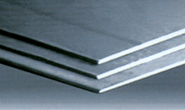Trade Cases

Commerce adjusts import duties on Korean plate
Written by Laura Miller
March 7, 2024
Antidumping and countervailing duty (AD/CVD) rates on imports of cut-to-length plate from two major South Korean producers may soon be adjusted.
The US Department of Commerce’s International Trade Administration (ITA) is conducting administrative reviews of both the AD and CVD orders on CTL carbon-quality steel plate from South Korea. It released the preliminary results this week in Federal Register filings reviewed by SMU.
The mandatory respondents in both reviews are Korea’s Dongkuk Steel Mill Co. and Hyundai Steel Co.
ITA rescinded both reviews for BDP International and Sung Jin Steel Co. after Nucor, SSAB, and Cleveland-Cliffs withdrew their request for examinations of the two companies.
The final results of ITA’s administrative reviews will be released in early July.
Last year, Commerce and the International Trade Commission decided in a sunset review that the AD and CVDs on CTL plate imports from South Korea, India, and Indonesia should remain in place for another five years.
AD review
The ITA preliminarily found that Korean producers/exporters did not make sales of the subject plate at below normal value during the period of review, Feb. 1, 2022, through Jan. 31, 2023.
As a result, the ITA set 0% preliminary AD margins for Dongkuk and Hyundai.
Dongkuk, Hyundai, BDP, and Sung Jin most recently received AD margins of 6.09% in the 2020-21 administrative review. That margin was carried over into the next year, as ITA rescinded the 2021-22 review based on the timely withdrawal of all review requests.
Should ITA’s initial results be adopted in its final results, Dongkuk and Hyundai’s AD margins will decrease, while BDP and Sung Jin’s rates will be maintained.
CVD review
For the CVD review, ITA is looking at the 2022 calendar year.
ITA determined initial subsidy rates of 1.93% for Dongkuk and 2.21% for Hyundai. These rates are slightly higher than the 1.08% rate found for both companies in the 2021 review.

Laura Miller
Read more from Laura MillerLatest in Trade Cases

SMU Survey: Less support seen for Trump tariff policies
Meanwhile, an increasing number think it's too early to say whether the penalties are going to bring more manufacturing to the US.

CRU: USW seeks exclusion for Canada from Trump’s tariffs
The union is also urging stronger enforcement against countries such as China which break trade rules, and a coordinated Canada-US strategy to protect union jobs across the North America

Price on trade: A lot happened last week – and it wasn’t all about tariffs
Should foreign investment be allowed to reshape the American steel Industry? Not to be lost in the recent on-again-off-again tariff frenzy, Nippon Steel’s proposed takeover of U.S. Steel has also found itself in President Trump’s crosshairs when it comes to trade and industrial policy. Nippon Steel initially announced its nearly $15-billion bid for U.S. Steel […]

Trump signs executive order aimed at making US shipbuilding ‘great again’
President Trump on Wednesday signed an executive order meant to breathe new life into American shipbuilding and curb Chinese dominance in the sector.

Trump still against selling USS to Japanese firm: Report
Despite ordering a new review of Nippon Steel’s bid for U.S. Steel, President Trump said he is still against selling USS to a Japanese company, according to media reports.
